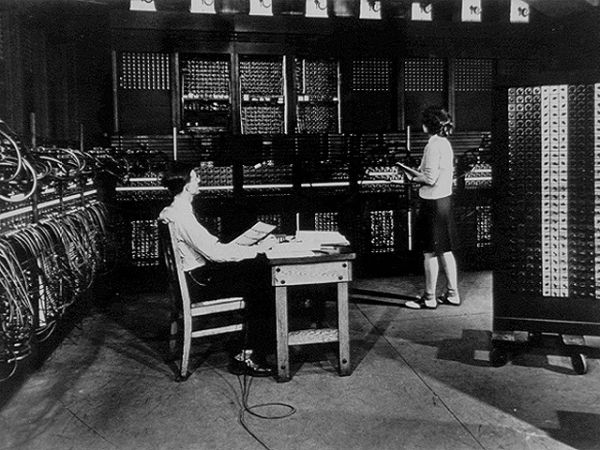Read the story of just how they did that, and what happened to the remains of ENIAC (hint: you can go see it) at Wired.Craft was on the verge of ending her search when an Army functionary dug up documents indicating that some panels had once been shipped from the Aberdeen (MD) Proving Ground to Oklahoma’s Fort Sill, home to the Army’s field artillery museum. When Craft contacted Fort Sill to inquire, the museum’s curator was stunned to discover that he did, indeed, possess the world’s largest trove of ENIAC hardware—nine panels in total, all stored in anonymous wooden crates that hadn’t been pried open in years. Fort Sill officials are unclear as to how they ended up with nearly a quarter of ENIAC, pieces of which also came to Oklahoma from the Anniston (AL) Army Depot.
An ENIAC technician changes a tube.
Craft struck a deal to borrow eight of Fort Sill’s panels in exchange for a promise to restore the hardware to some semblance of its former glory.
Welcome to ...
The place where the world comes together in honesty and mirth.
Windmills Tilted, Scared Cows Butchered, Lies Skewered on the Lance of Reality ... or something to that effect.
Windmills Tilted, Scared Cows Butchered, Lies Skewered on the Lance of Reality ... or something to that effect.
Sunday, November 30, 2014
How the World’s First Computer Was Rescued From the Scrap Heap
ENIAC
stands for Electronic Numerical Integrator And Computer, and the
machine that bore the name is often considered the first true electronic
computer, although that depends on how one defines “computer.” It
weighed 27 tons, contained 17,468 vacuum tubes, and consisted of 40 huge
interconnected metal panels. When ENIAC was deemed obsolete in 1955, it
was dismantled, separated, and parts went to various locations, where
the machine’s historical value was sometimes considered, sometimes not.
Then in 2006, Ross Perot wanted a piece of computer history for his
Plano, Texas, headquarters. Libby Craft was in charge of the project,
for which her team decided to track down what was left of ENIAC. It was
not an easy task.
Subscribe to:
Post Comments (Atom)


No comments:
Post a Comment